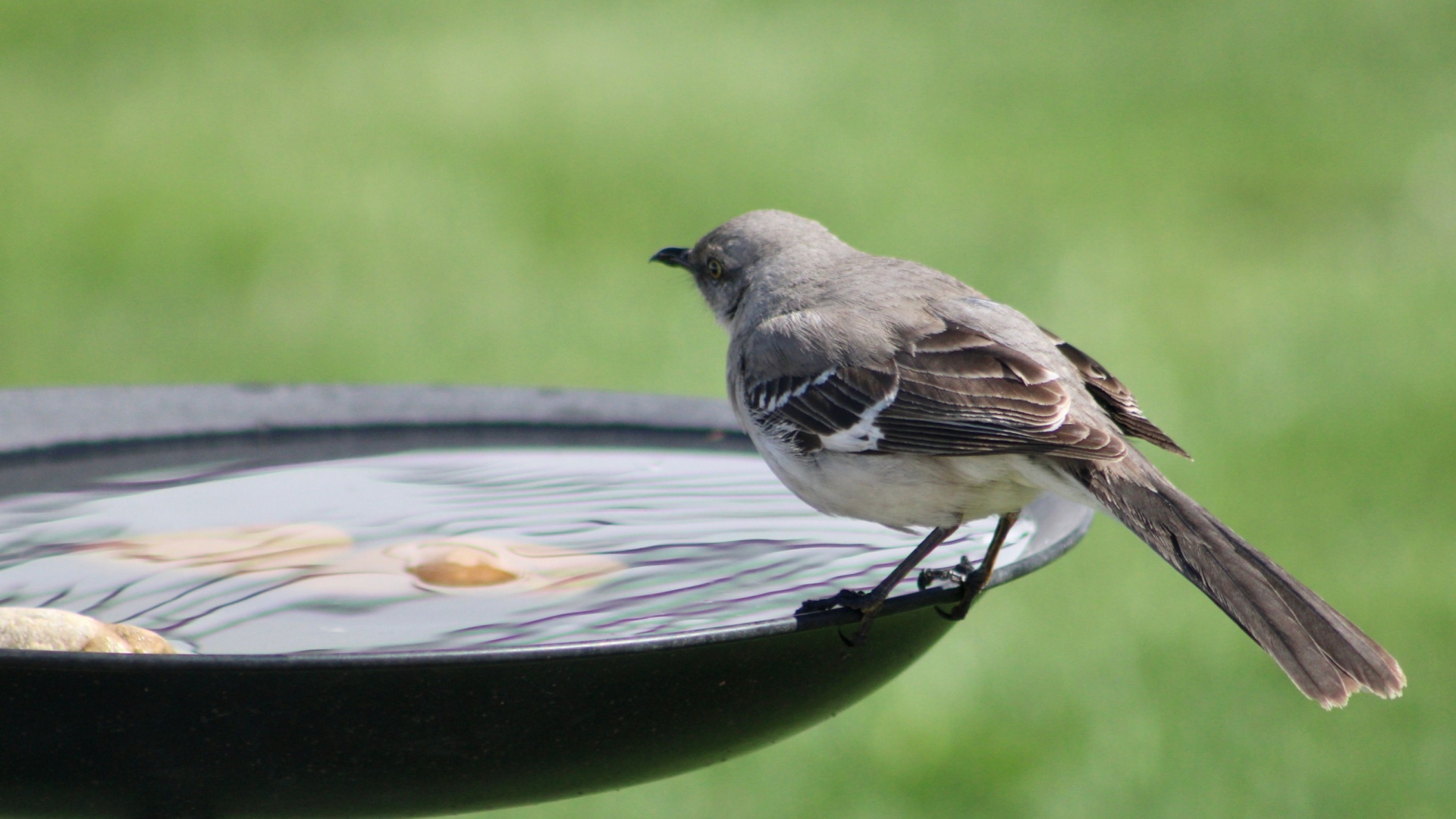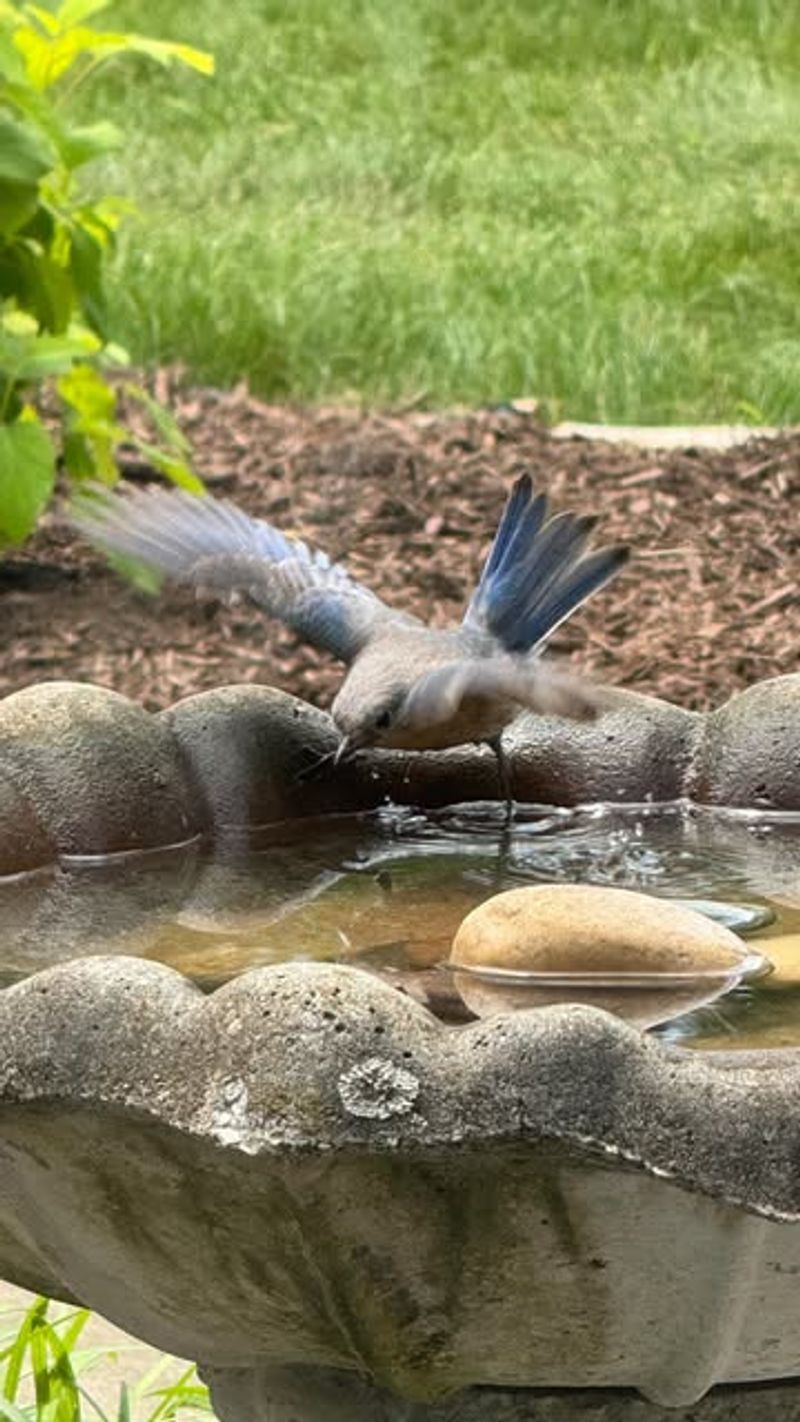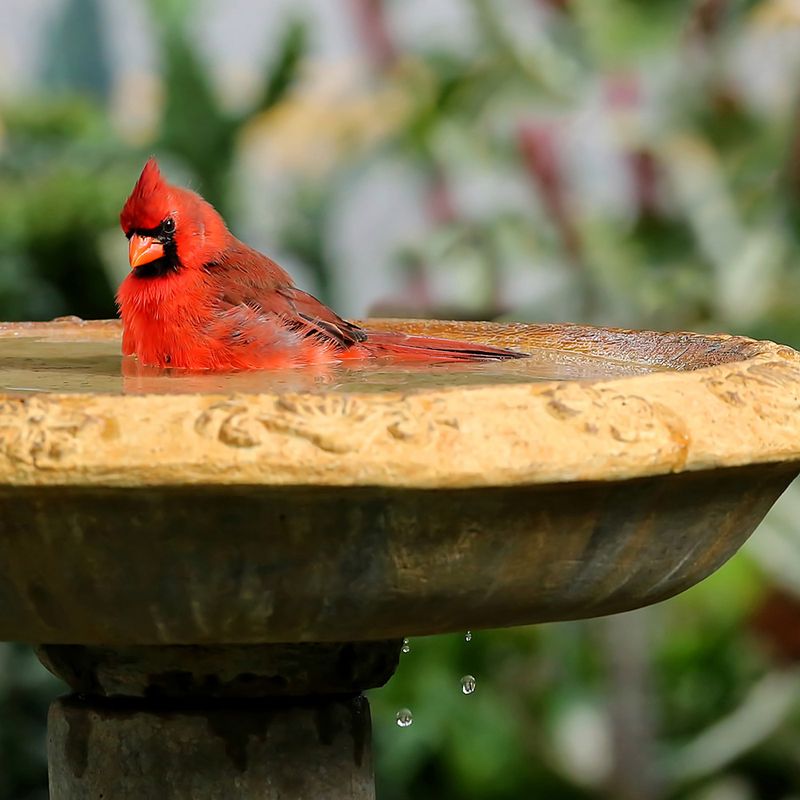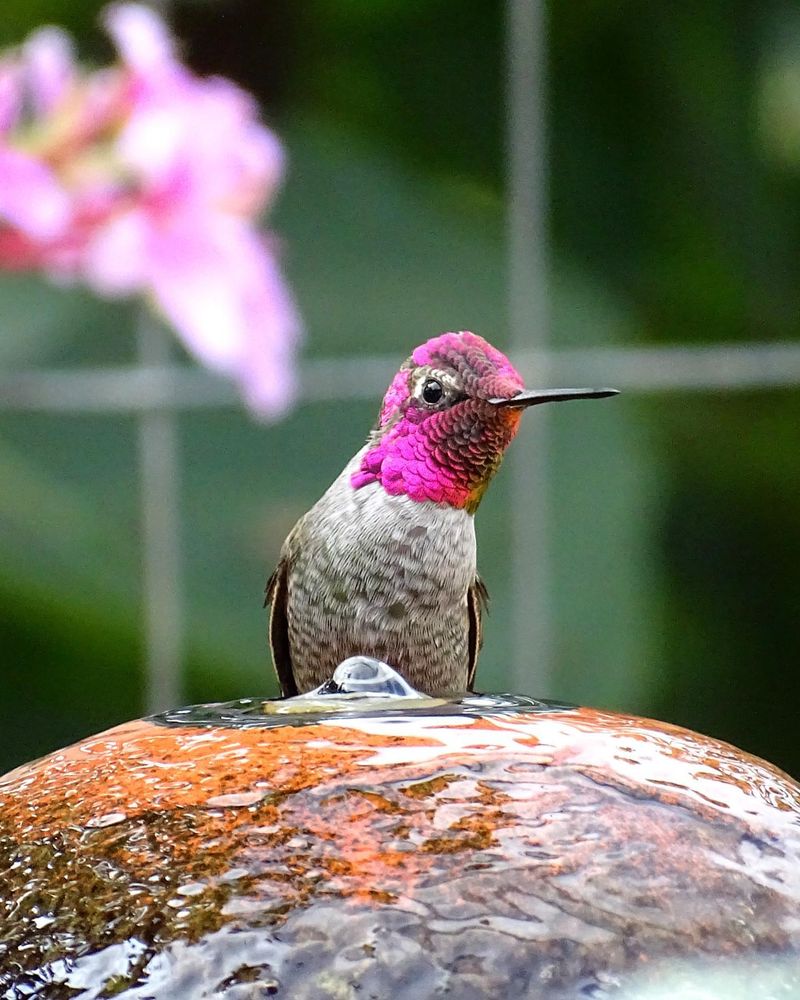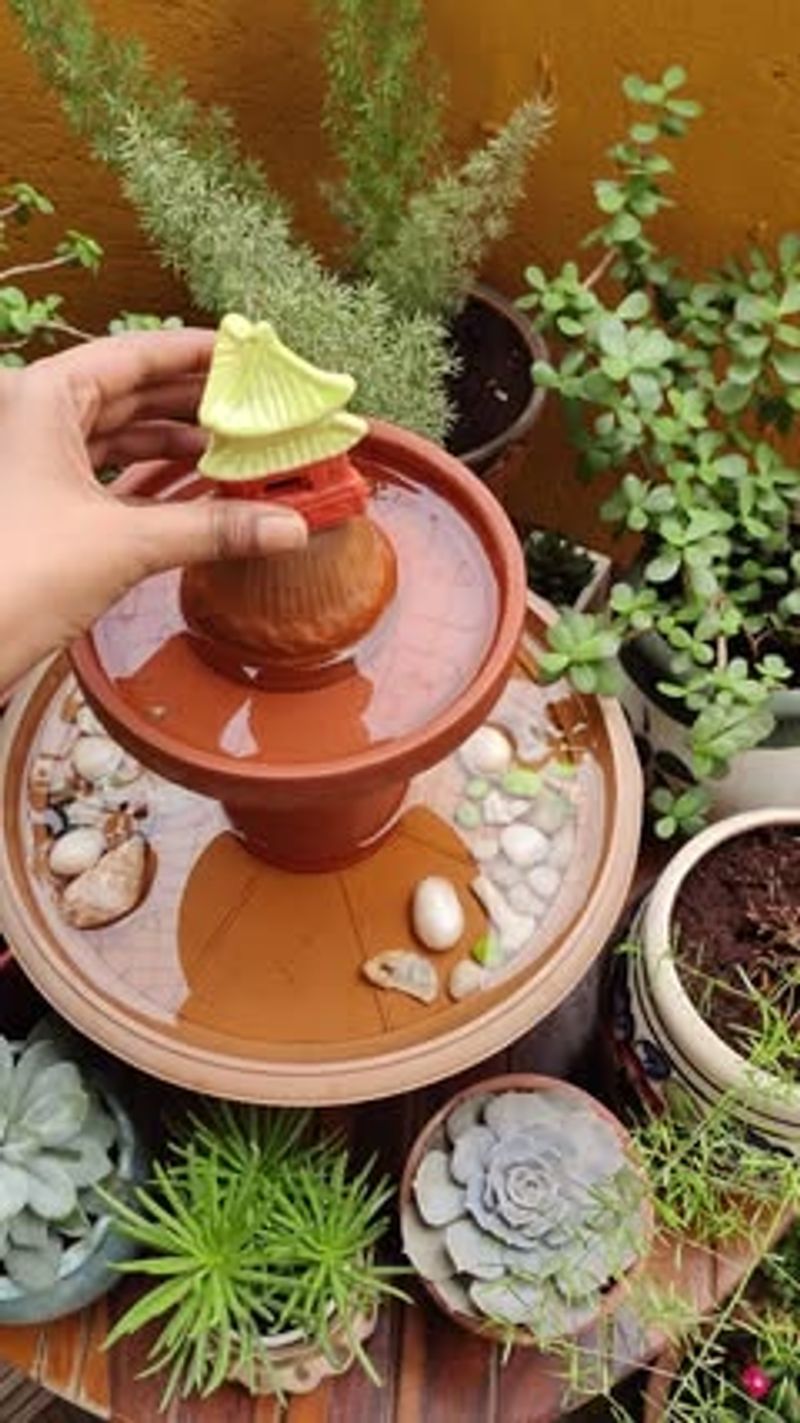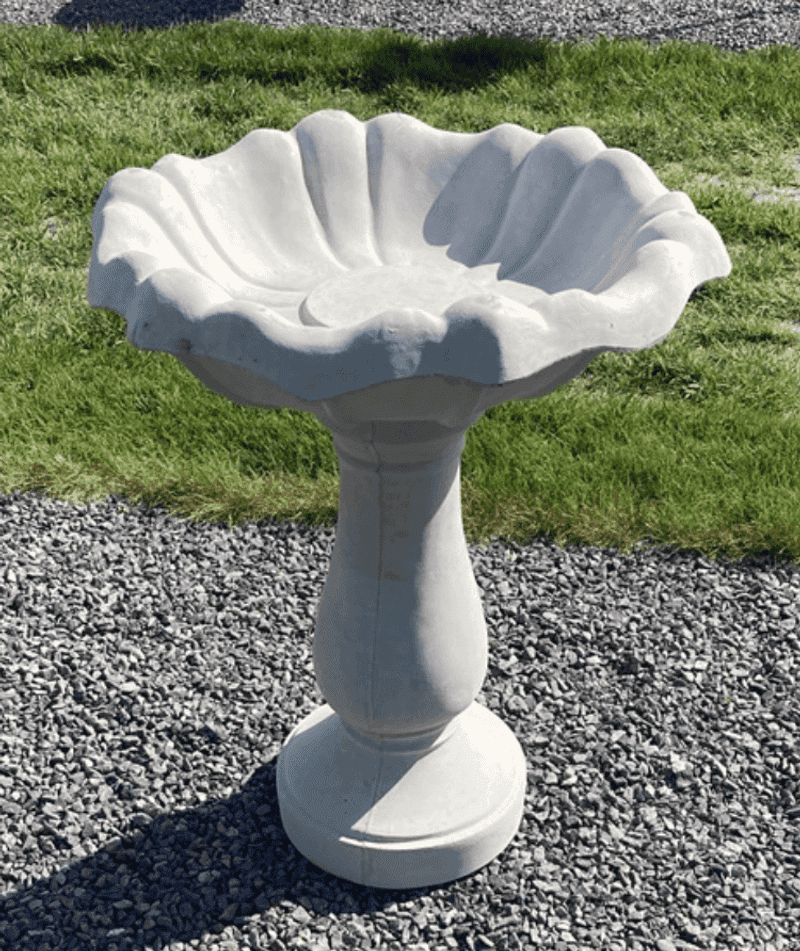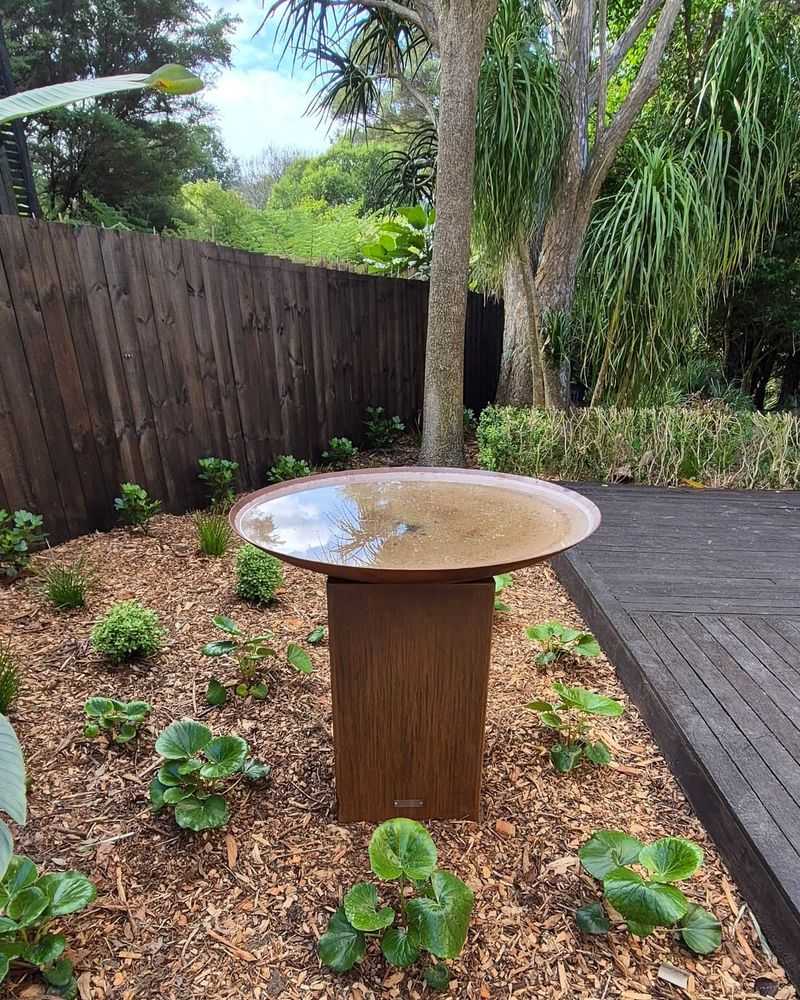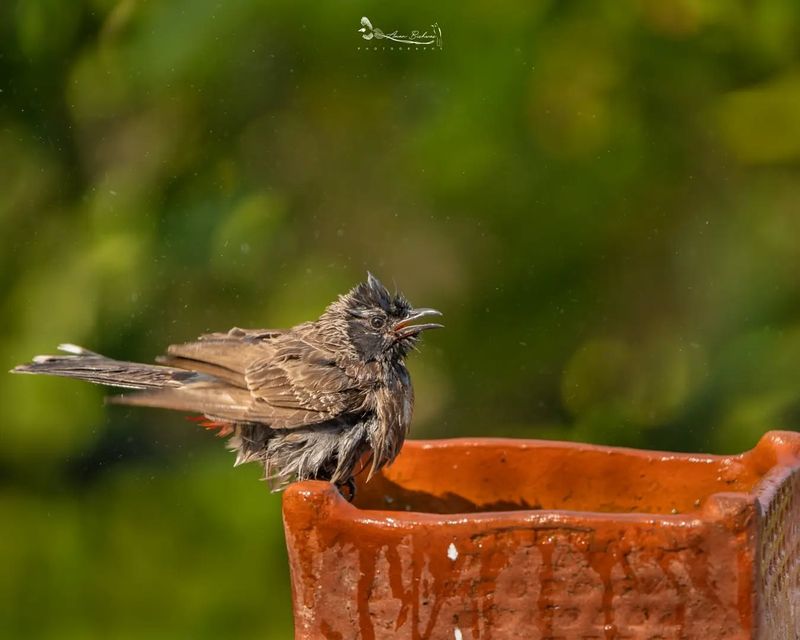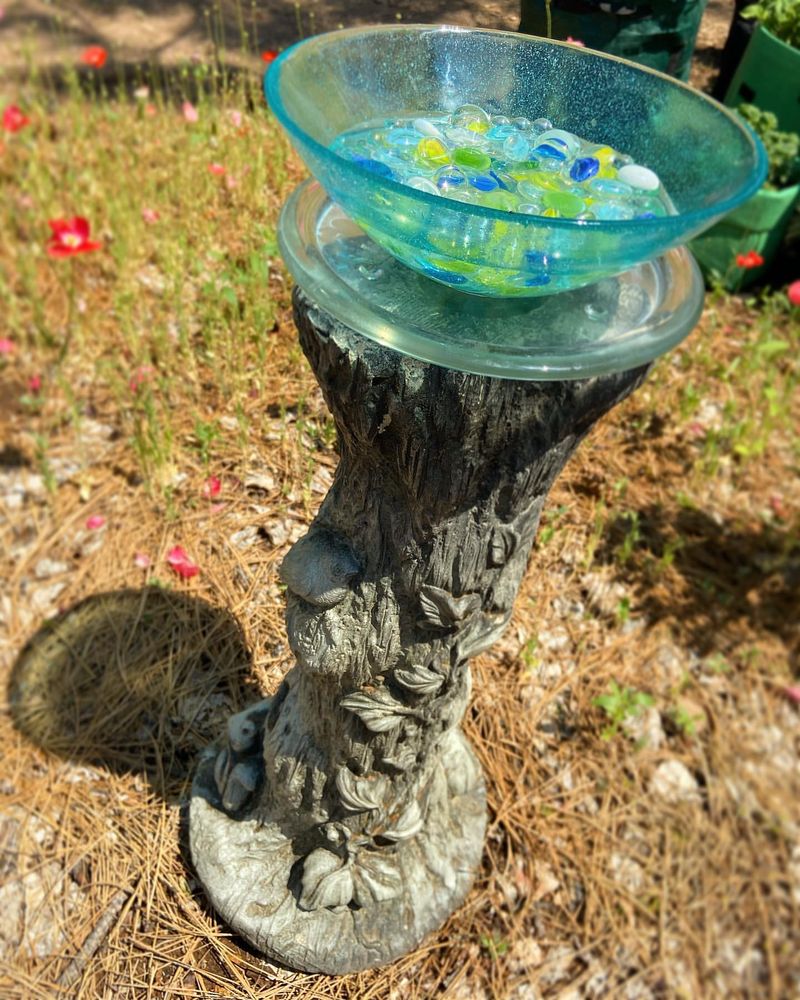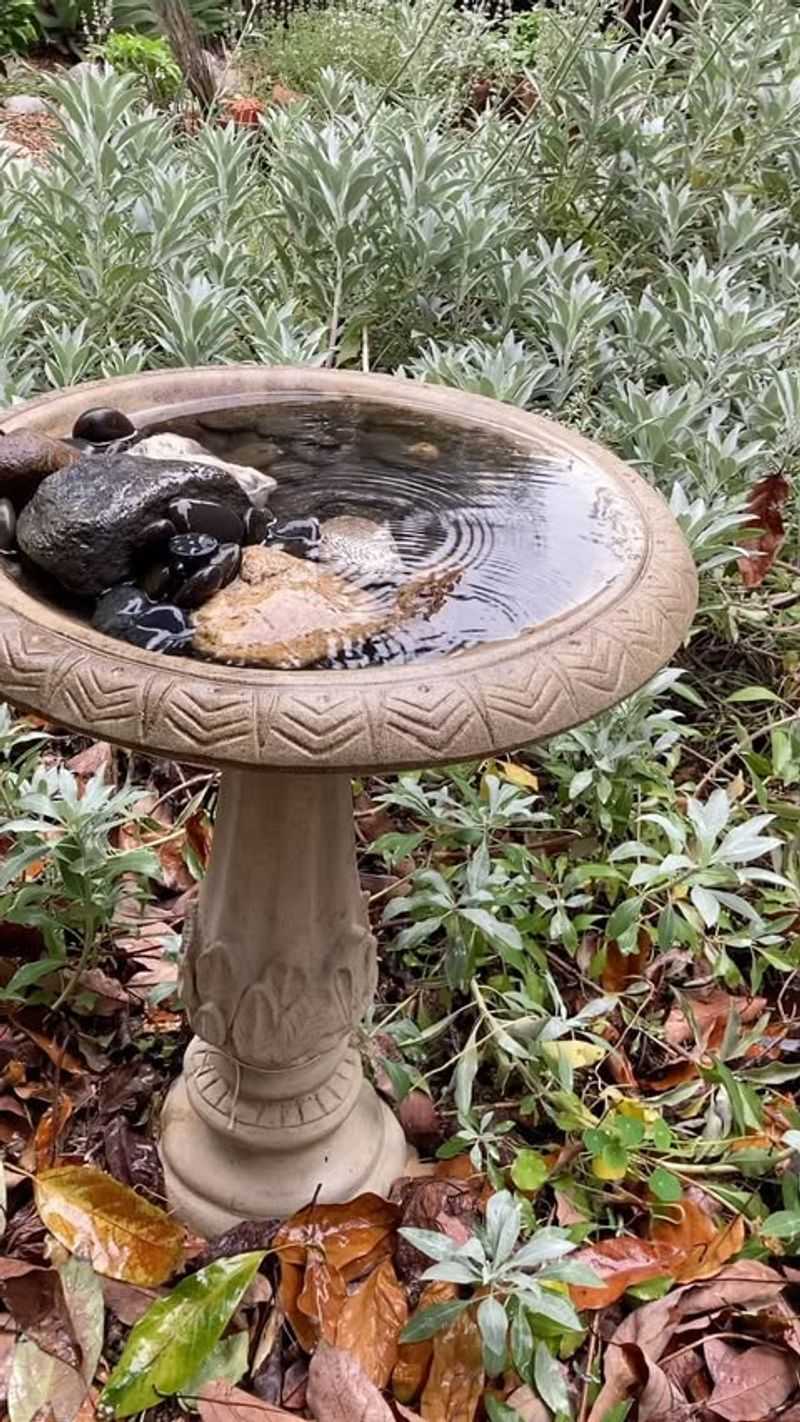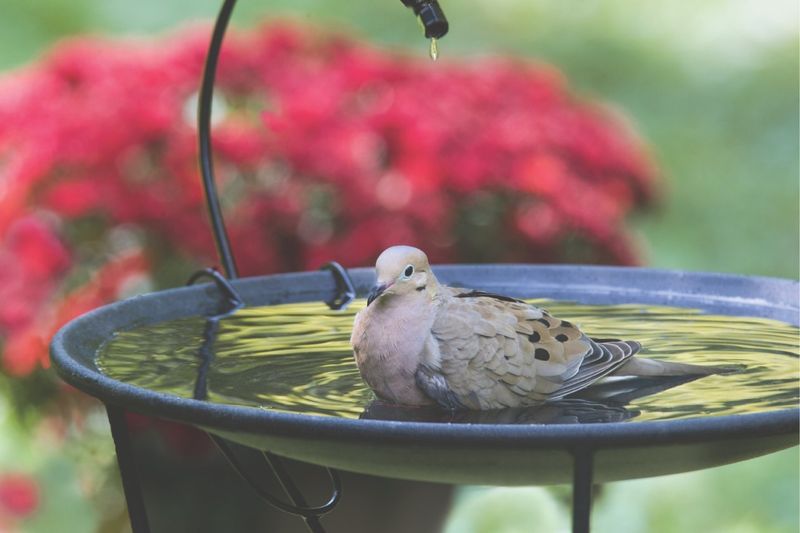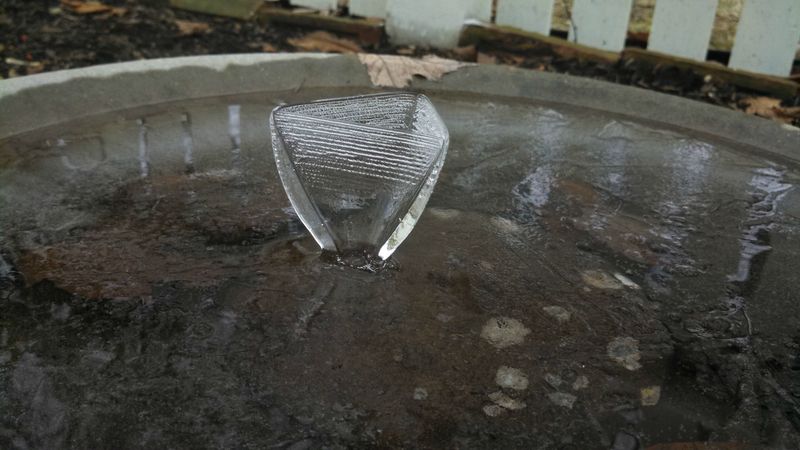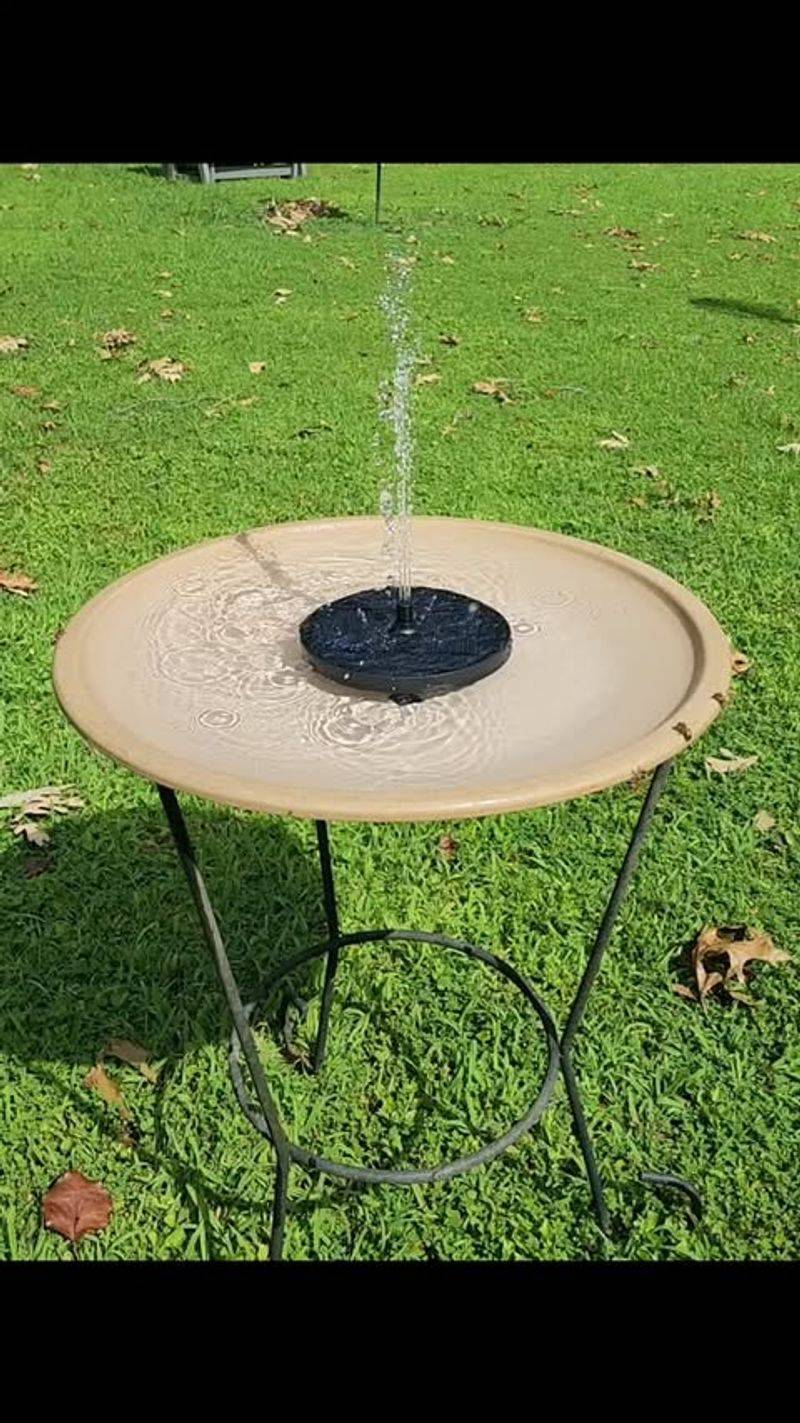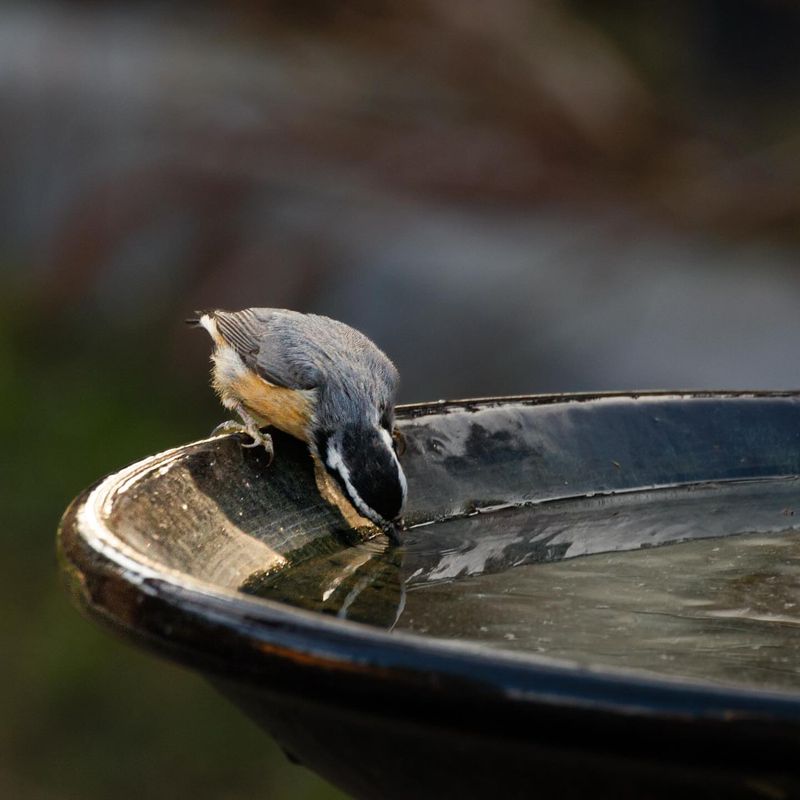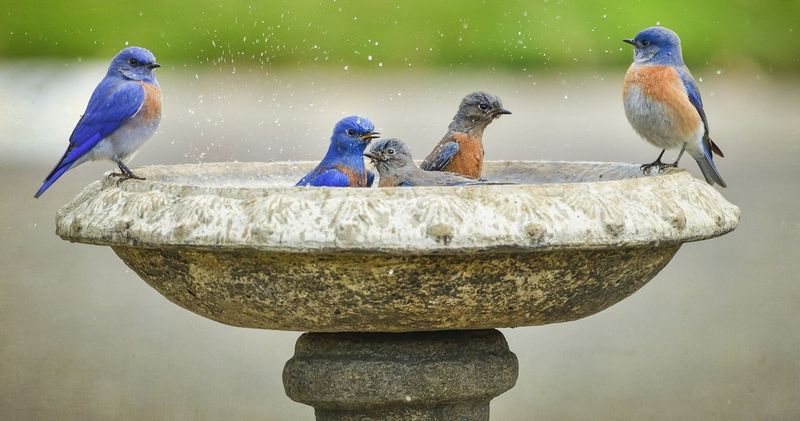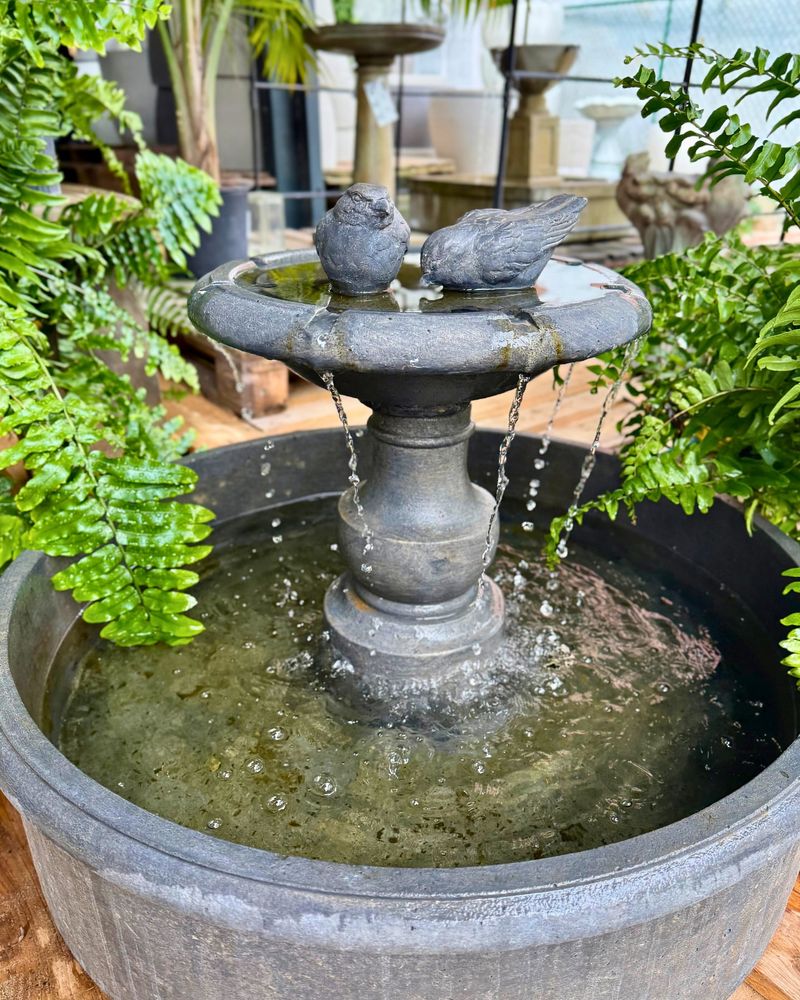If your Pennsylvania birdbath looks perfect but stays empty, it’s not your imagination—something’s driving the birds away. From water depth and placement to temperature and cleanliness, even small details can make a big difference.
A few simple fixes can turn your birdbath into a hotspot for feathered visitors all season long.
1. Water That’s Too Deep
Most birds prefer shallow puddles to deep pools. They’re looking for a gentle splash, not a swimming lesson! When water sits more than 2 inches deep, smaller songbirds like chickadees and finches can’t safely bathe.
Adding some smooth rocks or pebbles creates shallow areas where tiny birds can stand comfortably. Think of it as creating a beach entry for your feathered visitors—some can wade in the shallows while larger birds enjoy deeper sections.
2. Slippery Surfaces Scare Birds Away
Polished ceramic or glass birdbaths look beautiful in catalogs but create a dangerous skating rink for birds. Their tiny claws need something to grip! When birds can’t stand securely, they’ll avoid your bath completely.
Rough-textured surfaces provide the traction birds need to feel safe. Consider adding a thin layer of small pebbles or purchasing a bath with a naturally textured bottom. Birds appreciate thoughtful details that keep their footing secure while they enjoy their splashing time.
3. Stagnant Water Repels Health-Conscious Birds
Birds instinctively avoid still, stagnant water that might harbor harmful bacteria or mosquito larvae. Fresh, moving water signals safety to wild birds who have evolved to seek clean drinking sources.
Adding a small solar fountain or water wiggler creates gentle movement that birds find irresistible. The sound of trickling water also serves as a natural bird magnet, carrying through the air to alert nearby flyers that refreshment awaits. Plus, moving water stays cleaner longer and rarely freezes completely in Pennsylvania winters.
4. Location Too Exposed For Comfort
Birds feel vulnerable while bathing because wet feathers make escape from predators difficult. A birdbath sitting in an open yard without nearby cover feels like a death trap to cautious birds.
Position your bath about 10-15 feet from shrubs or trees where birds can quickly retreat if threatened. Think of it as providing an emergency exit strategy! Nearby perches give birds a place to preen after bathing and scan for danger before approaching the water.
5. Dirty Water Turns Birds Away
Birds are surprisingly fussy about water cleanliness. Leaves, algae, and droppings quickly contaminate standing water, making it unappealing and potentially harmful to birds.
Establish a regular cleaning schedule—every few days in summer and weekly in cooler months. A quick scrub with a stiff brush removes algae buildup without chemicals. After cleaning, rinse thoroughly before refilling with fresh water.
Your feathered visitors will appreciate this attention to their health and reward you with more frequent visits.
6. Too Much Sun Exposure
Water in direct Pennsylvania summer sun quickly becomes too hot for comfortable bathing and evaporates rapidly. Birds seek refreshment, not a hot tub experience! Hot water can also grow algae faster, creating maintenance headaches.
Place your bath where it receives morning sun but afternoon shade. This keeps the water temperature inviting throughout the day. Dappled light through tree branches creates an ideal setting that mimics natural forest puddles where wild birds evolved to bathe safely.
7. Intimidating Bath Size
Massive ornate birdbaths might complement your garden design but can overwhelm smaller birds. Many Pennsylvania songbirds prefer intimate bathing spots that feel secure and manageable.
Consider adding a second, smaller bath specifically designed for chickadees, wrens, and finches. These tiny visitors make up for their size with enthusiasm! Shallow dishes about 12-16 inches in diameter create perfect bathing spots for smaller species while still accommodating occasional larger visitors.
8. Missing Landing Zones
Birds appreciate a gradual approach to water. Without proper perching spots on the bath’s edge, birds can’t ease into their bathing routine comfortably.
Choose designs with wide, textured rims where birds can land and assess the situation before committing to a splash. Some clever Pennsylvania birders attach small branches or dowels across portions of round baths, creating natural-feeling perches.
These thoughtful additions transform an ignored bath into an inviting bird spa that accommodates the natural behaviors of your feathered neighbors.
9. Bath Too High Off The Ground
Many Pennsylvania ground-feeding species like juncos and towhees prefer bathing closer to earth level. Traditional pedestal baths sit too high for their comfort, especially when wet feathers might compromise quick escapes.
Try placing a shallow dish directly on the ground or just a few inches above it. Ground-level baths attract a whole new crowd of bathing birds! Just ensure these lower baths have extra protection from neighborhood cats by placing them in open areas with good visibility.
10. Competing Water Sources Nearby
Birds might be ignoring your bath because they’ve found better options nearby. Natural streams, neighbor’s baths, or even large puddles might offer more appealing features than your setup.
Make your bath the premium option by adding unique attractions like dripper attachments or floating bath toys that create movement. Fresh water changed daily becomes a powerful draw.
Consider asking neighbors about their bird-attracting secrets—Pennsylvania birders often enjoy sharing successful techniques that bring more feathered visitors to the neighborhood.
11. Scary Reflections Spook Birds
Highly reflective metal or glass baths can startle birds with unexpected movement or mirror-like surfaces. What looks decorative to human eyes might appear threatening to cautious avian visitors.
Choose natural materials like stone or concrete that minimize reflections. Weathered surfaces develop character over time and blend harmoniously into Pennsylvania garden settings. Birds appreciate bath materials that feel familiar and natural rather than shiny and artificial.
12. Contaminated Water Sources
Pennsylvania gardeners sometimes unknowingly contaminate birdbaths with residue from chemical fertilizers or pesticides on their hands or watering cans. Even trace amounts can deter sensitive birds.
Use dedicated containers just for filling birdbaths. Never add chemicals like bleach or algae preventers directly to bath water. Birds can detect even minimal chemical traces!
Rainwater collection systems provide the purest, most natural water source birds truly prefer—consider installing a simple rain barrel with a dedicated birdbath filling bucket.
13. Winter Water Woes
Pennsylvania winters present special challenges for bird-lovers. Birds actually need drinking water more during freezing months when natural sources ice over, but maintaining liquid water requires strategy.
Heated birdbaths or immersible heating elements keep water from freezing. Place winter baths in sunny spots to maximize natural warming. Some resourceful Pennsylvania birders use dark-colored baths that absorb solar heat more efficiently.
Remember that winter bathing helps birds maintain clean, insulating feathers during the harshest season when they need them most.
14. Missing The Dawn Chorus
Many Pennsylvania birds follow strict daily routines, with peak bathing activity occurring early morning and late afternoon. If you’re only checking your bath during midday, you might miss the action entirely!
Try refreshing water before sunrise to catch the morning bathing rush. Dawn bathers include robins, cardinals and many songbirds preparing for active foraging.
Evening bath refreshing attracts birds completing their daily activities before roosting. These twilight visitors often include different species than morning bathers, expanding your backyard bird diversity.
15. Neighborhood Predator Problems
Hawks, outdoor cats, or even squirrels can create a dangerous environment that makes birds too nervous to bathe. Birds won’t risk vulnerability if they’ve witnessed predator activity nearby.
Consider installing protective features like partial covers or nearby brush piles where smaller birds can quickly hide. Motion-activated sprinklers can discourage prowling cats without harming them.
Pennsylvania’s native predators like Cooper’s hawks are important parts of the ecosystem, but strategic bath placement can help smaller birds feel secure enough to enjoy bathing.

